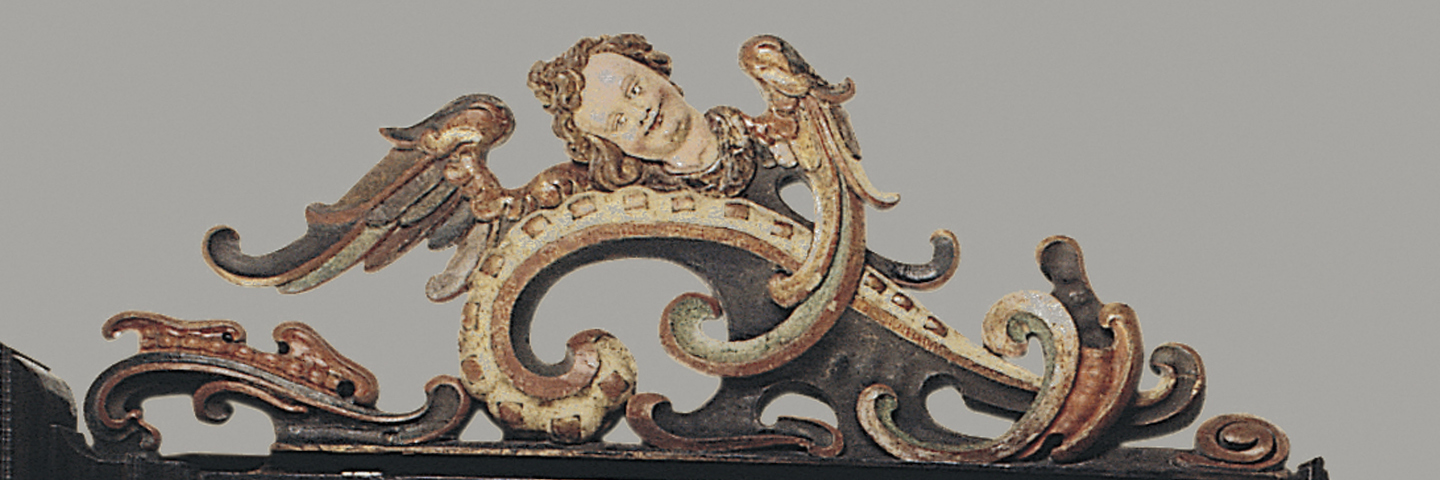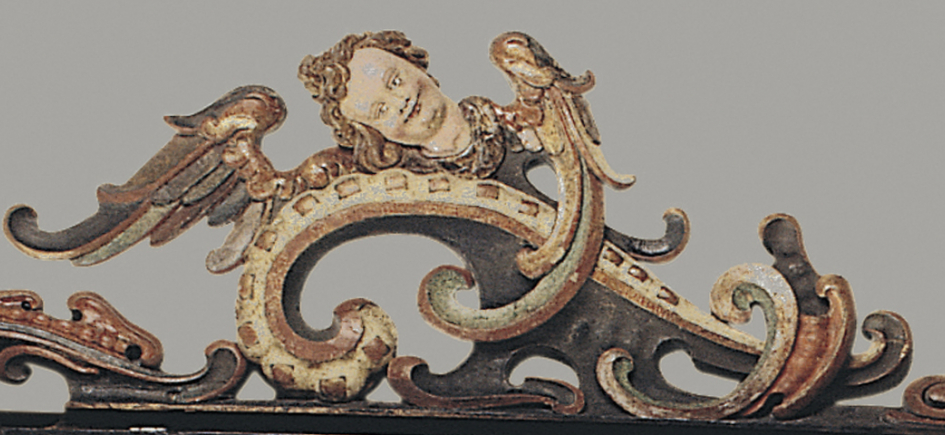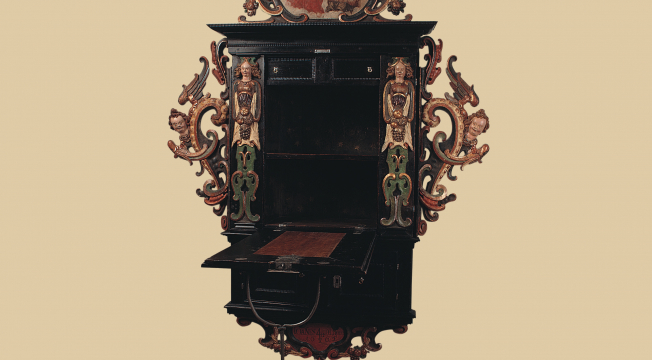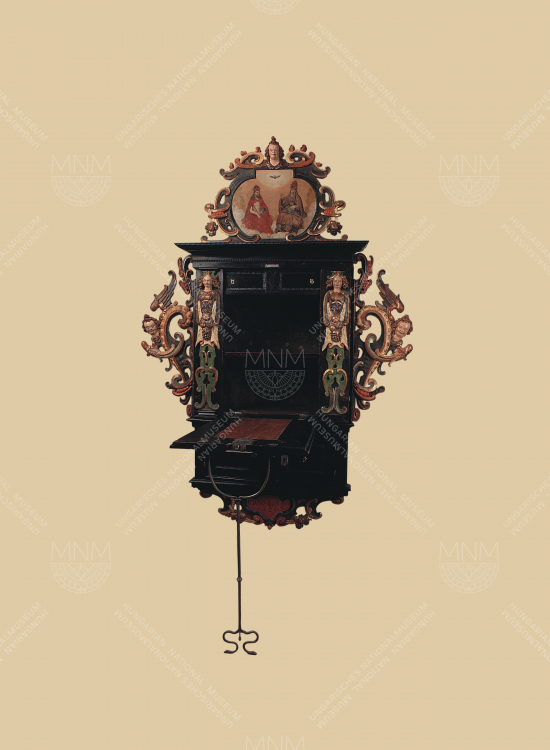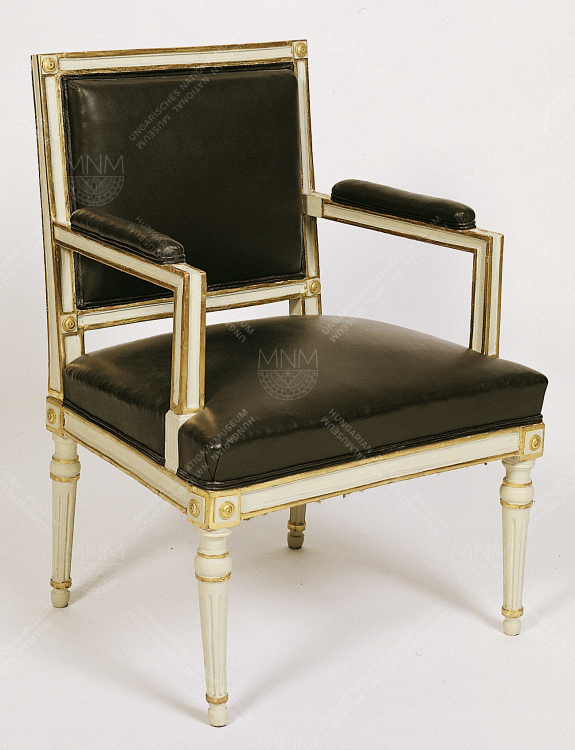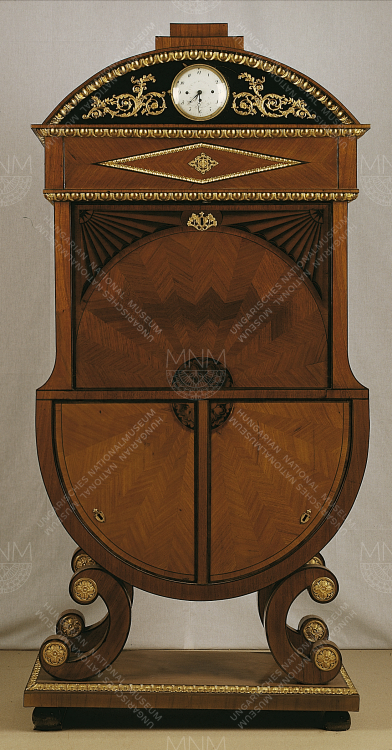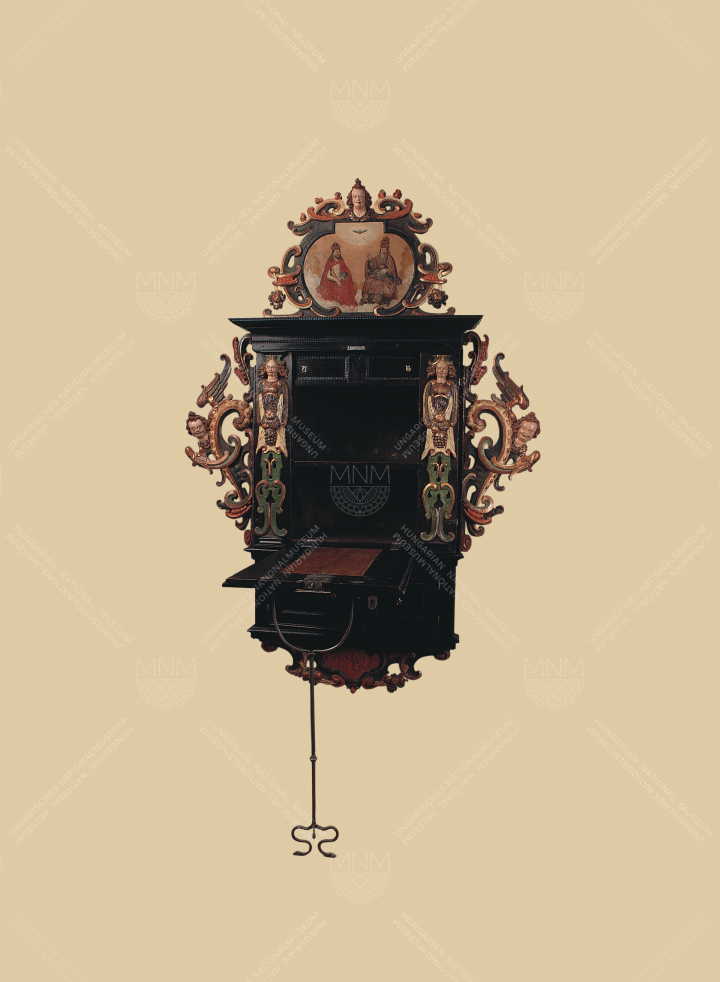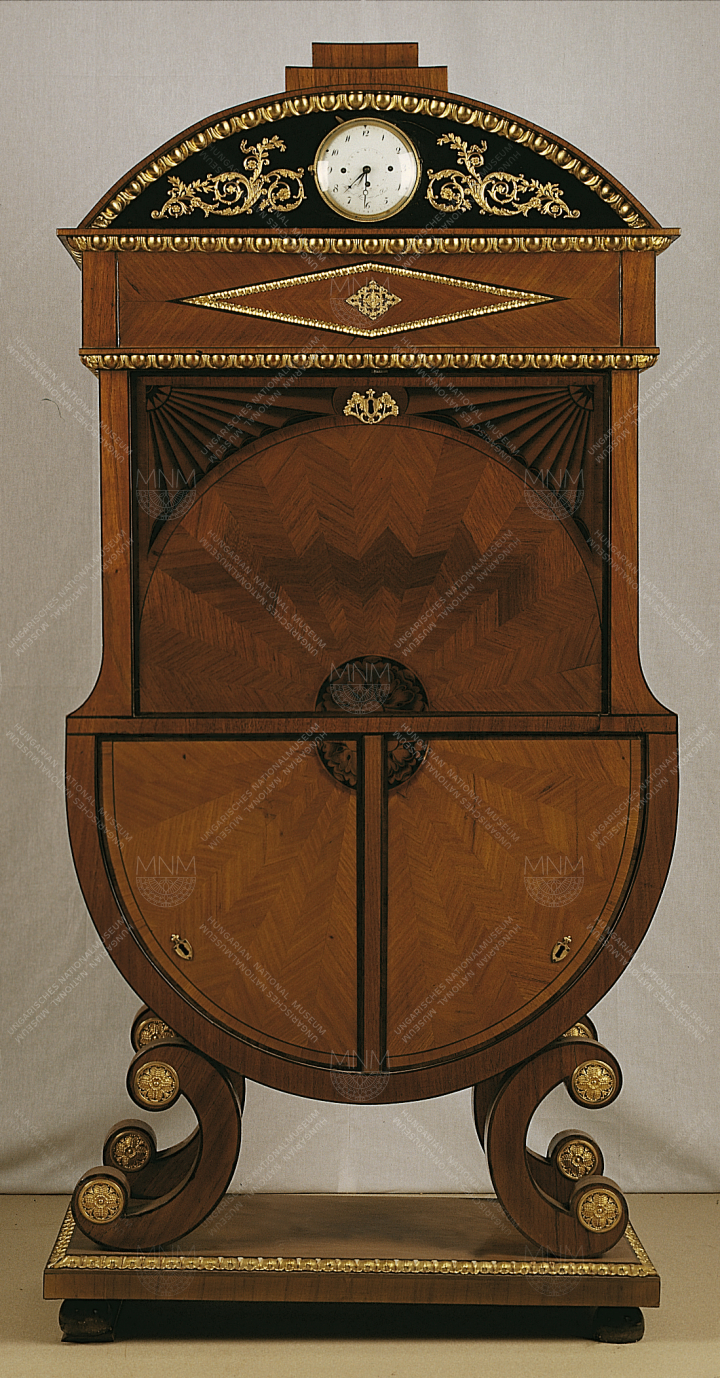
The earliest pieces of our Furniture Collection are almost as old as the museum preserving them. Pieces coming from the legacy Joseph, Palatine of Hungary, Ferenc Deák, Lajos Kossuth, the Széchlnyi and the Apponyi families, from former state organisations and institutions, social, cultural and financial bodies and distinct purchases enlarged the collection.
The Furniture Collection used to form one group of the historical relics belonging to the Coin and Antiquities Collection at the beginning of the 19th century. Almost one hundred years later, at the beginning of the 20th century the collection was restructured as one of those of the Historical Department, a new organizational unit. Its history was largely affected by the birth of specialised museums leaving the National Museum: the Museum of Ethnography, the Museum of Applied Arts and the since extinct Memorial Museum of Queen Elizabeth and the Parliament Museum.
Initially pieces of furniture were stored as items belonging to the "antiquitates et raritates varii generis" group. The Antiquities Repository was enlarged by some pieces of furniture of historical importance in the last two decades of the 19th century. 21 items were donated from the legacy and enterieur of his flat of Ferenc Deák in 1881. The historical furniture of Lajos Kossuth who had passed away in Italy earlier was moved to the museum in 1894 and 1895. As a gift from King Joseph Francis I, pieces of furniture from the legacy of Queen Elizabeth were donated to the Hungarian National Museum. Her writing desk, armchair, bookshelves, plant stands, sofa, settee, tables, mirrors, chandeliers, lamps and fire-guard formed the basis of the future Queen Elizabeth Memorial Museum.
In addition to furniture belonging to persons and historical events or sites, thus in many cases also classified as relics, pieces of furniture from state apparatus, public administration offices, authorities, financial bodies, guilds, institutions, churches and fortresses or castles and civic families were also included in the collection.
By the second half of the 1920s, the outlines of the groups of items of today's furniture collection were formed - in which Hungarian historical furniture and resources and remnants of the history of Hungarian culture are preserved.
The content of the furniture collection, after joining the medieval and modern collections, is today a unique historical profile collection. It preserves some medieval and modern thematic groups from the 14th-20th centuries: historical, personal relics and artworks, ensembles, institutions, individual objects, guild memories and objects of social strata, styles and workshops.
